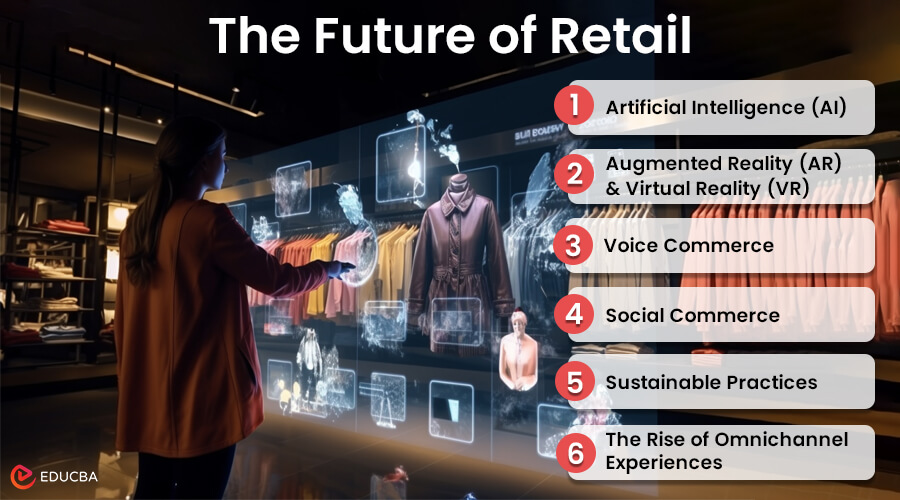What is the Future of Retail?
The future of retail is changing fast because more people are shopping online, and their preferences are changing. This shift is making traditional stores rethink how they do business, focusing on combining online and in-store shopping smoothly.
To succeed in this new era, retailers must use technology to create seamless shopping experiences with strategic business plans that work well online and offline. They should integrate their online and physical stores to give customers a unified shopping method. A clear plan is important for stores to stay competitive in the industry and meet the needs of customers who want convenience, options, and a personalized shopping experience.
Future of Retail – Key Trends
Here are some key trends that are likely to reshape the shopping industry:
1. Artificial Intelligence (AI)
AI can customize the shopping experience for individual customers. It will help virtual stylists recommend outfits based on personal style, while chatbots will provide real-time product information and support. Retailers can adjust prices based on individual preferences, shopping habits, and market demand, creating a more customized and responsive shopping experience.
2. Augmented Reality (AR) and Virtual Reality (VR)
AR and VR technologies will let customers virtually try clothes as well as accessories, which eliminates the need to visit fitting rooms. Customers can also take immersive 360-degree tours of stores from their homes to enhance the online shopping experience.
3. Voice Commerce
Devices like Alexa and Google Assistant are making shopping easier using voice commands. Customers can order products, check inventory, and receive recommendations hands-free. This technology streamlines the shopping process, making it quicker and more efficient.
4. Social Commerce
Social media platforms embed shopping capabilities, allowing users to purchase products directly through apps. Brands use live product demonstrations and influencer campaigns to engage with consumers and drive sales.
5. Sustainable Practices
Increasing consumer demand for environmentally responsible products pushes retailers to adopt sustainable practices. Retailers focusing on sustainable packaging, responsibly sourced materials, and reducing their environmental footprint will likely attract a dedicated customer base.
6. The Rise of Omnichannel Experiences
This new service allows customers to order products online and pick them up in-store, which helps with easy online shopping and fast store pickup. Real-time product availability helps customers find items easily. Retailers can improve the experience with mobile apps featuring product info, promotions, and loyalty rewards. Using past purchase data, they can suggest products that match each customer’s interests, making shopping more personalized.
How to Create a Business Plan to Adapt to Future Changes?
Today’s consumers expect personalized service, convenience, and transparency. A well-designed business plan, created through thorough strategy planning or with the guidance of business plan experts, is essential.
➔ Key Elements of the plan:
- Target Market Analysis: Understand evolving customer behaviors and preferences.
- Competitive Landscape: Study competitors’ e-commerce and omnichannel strategies to identify opportunities for differentiation.
- Marketing and Sales Strategies: Reach customers through multiple channels and focus on mobile and social media platforms. Use data to personalize marketing efforts.
- Inventory Management: Optimize stock levels to meet online and offline demand.
➔ Trends to Consider:
- Rise of Mobile Shopping: Ensure platforms are mobile-friendly for easy browsing and purchasing.
- Value of Social Proof: Use customer reviews and recommendations to build trust and influence purchasing decisions. Omni channel marketing can integrate social media channels to use this trend.
- Demand for Sustainability: Highlight ethical sourcing practices to appeal to environmentally conscious consumers.
Final Thoughts
Looking ahead, retail offers exciting opportunities. Retailers can succeed in this evolving industry by adopting new technologies, adapting to consumer needs, and focusing on sustainability. However, despite the rise of technology, human interaction will remain crucial in retail. Stores can create a welcoming atmosphere by offering personalized customer service, hosting in-store events, and promoting a sense of community.
Recommended Articles
We hope this guide helped you understand the future of retail and how you can adapt to the changes. Visit these recommendations for AI-related articles.




